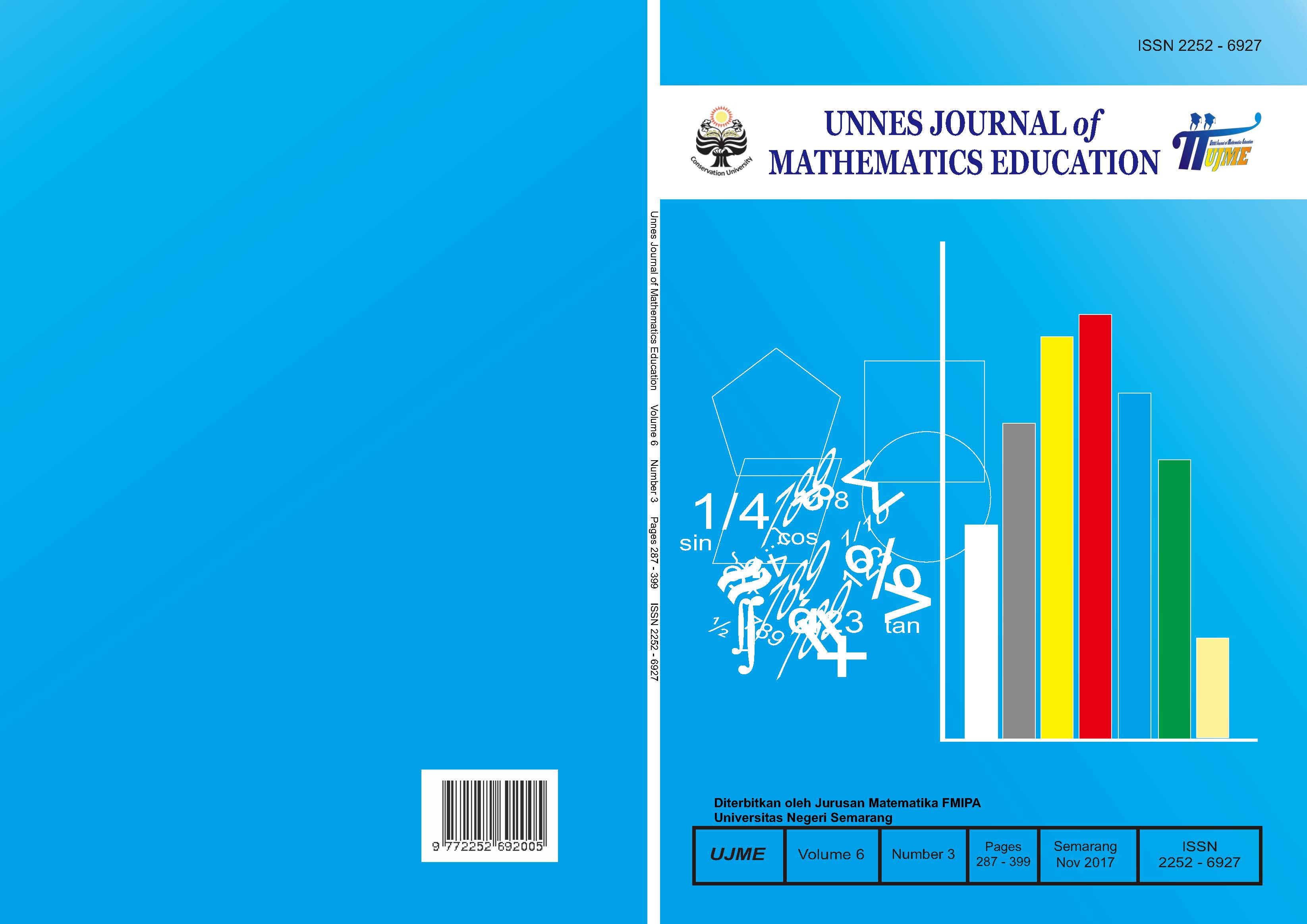Mathematical Communication Ability Viewed from Problem Solving Ability in Learning SAVI Model with Flash Media
##plugins.themes.academic_pro.article.main##
Abstract
The aims of this research were (1) to test the mathematical communication ability of Junior High School 3 Salatiga in learning SAVI model with flash media achieved learning completeness classically, (2) to test the average of students’ mathematical communication ability in learning SAVI model with flash media compared with the average of students’ mathematical communication ability in learning DL model, and (3)to analyze the influences of learning SAVI model with flash media to group of students with low, medium, and high mathematical communication ability. The method used in this research is mixed method. Data analysis used included proportion test, averages difference test, and gain test. The results were (1) the mathematical communication ability of Junior High School 3 Salatiga in learning SAVI model with flash media achieved learning completeness classically, (2) the average of students’ mathematical communication ability in learning SAVI model with flash media higher than the average of students’ mathematical communication ability in learning DL model, and (3) learning SAVI model with flash media influenced to group of students with low, medium, and high mathematical communication ability.
##plugins.themes.academic_pro.article.details##
References
Azhari. (2015). Peran Media Pendidikan dalam Meningkatkan Kemampuan Bahasa Arab Siswa Madrasah. Jurnal Ilmiah Didaktika. 16(1):43-60.
BSNP. (2010). Paradigma Pendidikan Nasional Abad XXI. Jakarta: BSNP.
Hamalik, O. (1994). Kurikulum dan Pembelajaran. Bandung: Bumi Akrsara.
National Council of Teacher of Mathematics. (2000). Principles and Standards for School Mathematics. Reston. VA: NCTM.
Peraturan Menteri Pendidikan dan Kebudayaan Nomor 20 Tahun 2016 tentang Standar Kompetensi Lulusan Pendidikan Dasar dan Menengah.
Polya, G. (1973). How To Solve It: A New Aspect of Mathematical Method (2th ed). Princeton: Pinceton University Press.
Pramono, A. (2004). Presentasi dengan Macromedia Flash Edisi II. Yogyakarta: ANDI.
Rusman. (2012). Belajar dan Pembelajaran Berbasis Komputer Mengembangkan Profesionalisme Abad 21. Bandung: Alfabeta.
Sarnoko, Ruminiati, & Setyosari, P. (2016). Penerapan Pendekatan SAVI Berbantuan Video Pembelajaran Untuk Meningkatkan Aktivitas dan Hasil Belajar IPS Siswa Kelas IV SDN I Sanan Girimarto Wonogiri. Jurnal Pendidikan. 1(7):1235-1241.
Sinurat, M., Syahputra, E., & Rajagukguk, W. (2015). Pengembangan Media Pembelajaran Matematika Berbantuan Program Flash Untuk Meningkatkan Kemampuan Matematika Siswa. Jurnal Tabularasa PPS Unimed. 12(2):154-170.
Siswoyuono, A. M. & Susilo, B. E. (2016). Komparasi Pembelajaran SAVI dan REACT Pada Kemampuan Pemecahan Masalah Siswa Kelas VIII Materi Kubus dan Balok. Beta. 9(1):15-33.
Suherman, E. (2008). Model Belajar dan Pembelajaran Berorientasi Kompetensi Siswa. Educare: Jurnal Pendidikan dan Budaya. 5(2):1-31. Bandung: FKIP UNLA.
Taneo, P. N. L. (2016). Pembelajaran Model SAVI Berpendekatan Kontekstual Terhadap Kemampuan Pemecahan Masalah Matematika Siswa. Jurnal Pendidikan Matematika Indonesia. 1(1):14-19.
Utama, N. P. (2012). Penggunaan Macromedia Flash 8 Pada Pembelajaran Dimensi Tiga. Jurnal Pendidikan Matematika. 1(1):51-59.
